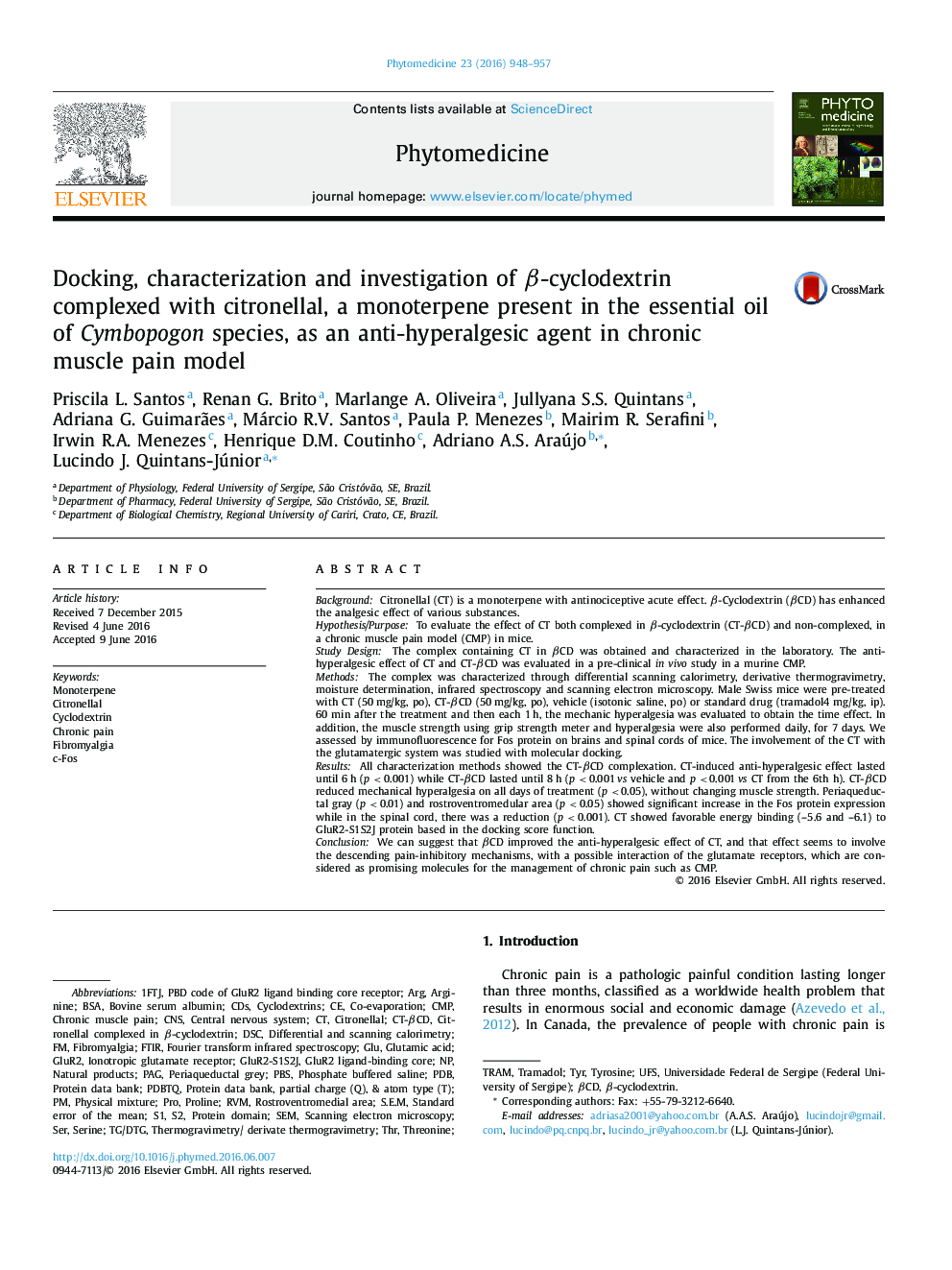| کد مقاله | کد نشریه | سال انتشار | مقاله انگلیسی | نسخه تمام متن |
|---|---|---|---|---|
| 2496214 | 1116114 | 2016 | 10 صفحه PDF | دانلود رایگان |

BackgroundCitronellal (CT) is a monoterpene with antinociceptive acute effect. β-Cyclodextrin (βCD) has enhanced the analgesic effect of various substances.Hypothesis/PurposeTo evaluate the effect of CT both complexed in β-cyclodextrin (CT-βCD) and non-complexed, in a chronic muscle pain model (CMP) in mice.Study DesignThe complex containing CT in βCD was obtained and characterized in the laboratory. The anti-hyperalgesic effect of CT and CT-βCD was evaluated in a pre-clinical in vivo study in a murine CMP.MethodsThe complex was characterized through differential scanning calorimetry, derivative thermogravimetry, moisture determination, infrared spectroscopy and scanning electron microscopy. Male Swiss mice were pre-treated with CT (50 mg/kg, po), CT-βCD (50 mg/kg, po), vehicle (isotonic saline, po) or standard drug (tramadol4 mg/kg, ip). 60 min after the treatment and then each 1 h, the mechanic hyperalgesia was evaluated to obtain the time effect. In addition, the muscle strength using grip strength meter and hyperalgesia were also performed daily, for 7 days. We assessed by immunofluorescence for Fos protein on brains and spinal cords of mice. The involvement of the CT with the glutamatergic system was studied with molecular docking.ResultsAll characterization methods showed the CT-βCD complexation. CT-induced anti-hyperalgesic effect lasted until 6 h (p < 0.001) while CT-βCD lasted until 8 h (p < 0.001 vs vehicle and p < 0.001 vs CT from the 6th h). CT-βCD reduced mechanical hyperalgesia on all days of treatment (p < 0.05), without changing muscle strength. Periaqueductal gray (p < 0.01) and rostroventromedular area (p < 0.05) showed significant increase in the Fos protein expression while in the spinal cord, there was a reduction (p < 0.001). CT showed favorable energy binding (–5.6 and –6.1) to GluR2-S1S2J protein based in the docking score function.ConclusionWe can suggest that βCD improved the anti-hyperalgesic effect of CT, and that effect seems to involve the descending pain-inhibitory mechanisms, with a possible interaction of the glutamate receptors, which are considered as promising molecules for the management of chronic pain such as CMP.
Figure optionsDownload high-quality image (132 K)Download as PowerPoint slide
Journal: Phytomedicine - Volume 23, Issue 9, 15 August 2016, Pages 948–957